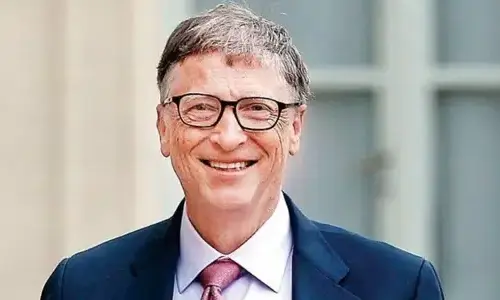How does modern technology improve our health?
Medicine and technology go hand in hand, whether we realize it or not.
How much of a difference is the average length of hospital stay, surgery, doctor's appointments or even chronic disease management compared to those in the past?
What major developments have pushed the boundaries of the medical world and allowed specialists to care and treat patients much more effectively?
If you want to find out, you've come to the right place!
Garment technology

Wearable technology is becoming a huge means of improving health, allowing for the continuous and discrete monitoring of vital signals.
2016 saw huge leaps in this field, with Royal Philips releasing medical grade biosensor stickers for hospital patients.
It measures vital markers like respiratory rate and sends data to app-based software over Bluetooth to inform the clinician of any problem.
GreatCall has released the Lively Wearable, a wearable or button-tied lanyard that connects to the expert team in the event of an emergency.
However, not all wearables are meant for emergencies.
In the UK, the NHS (National Health Service) has been testing a digital training device for type 1 and 2 diabetics.
This is to manage their condition following reports in 2015 that more than 20% of diabetics have an avoidable episode of hypoglycemia in the hospital.
All of these devices are essentially a way of monitoring illness, stopping unnecessary hospital trips and potentially life-threatening emergencies.
3d printing

Technology that offers one of the biggest improvements to our health, especially in the near future, is 3D printing.
When Charles W Hull filed a patent for a 3D printer, he never thought that the device would become popular in the medical world.
It was first used primarily in surgery in 1999 when an artificial bladder was first implanted in a patient.
A biodegradable scaffold of their bladder is based on a CT scan and the cultured tissue layered on it.
The next leap was in organ printing using bio-ink regenerating tissue, the first example being a non-living kidney printed in 2002.
In 2016, scientists created the Integrated Organ and Printing System or ITOP, which uses biodegradable plastic to print water-based ink and tissue shapes to hold cells and channels.
3D printing is an incredible subject and can easily have an entire article written in itself with a lot of great strides in the field.
The main problem with 3D bio-printing is to keep cells alive.
This is what scientists all over the world are trying to discover.
But rest assured, once this is mastered, organ printing will become a huge leap forward, especially for those on the transplant list and ITOP appears to be the leading device.
Robot surgery

Robot surgery, a distant concept, has never been seen in our lives, but this cannot be far from the truth.
The DaVinci Si is a device used in many surgeries in the US, including muscle removal surgery, to remove some tumors.
This system allows surgeons to fully control activity with less scarring and pain during healing and recovery, as well as significantly reducing the risk of infection.
So far there is no fully automated surgical procedure, but a lot of research is being done.
It is only a matter of time until you have the major surgery, repair the wound and set out the next day.
An unbelievable achievement thanks to the advancements in technology.
Computer diagnostics

Computer diagnostics is becoming more and more a viable and cost-effective option, tested by a number of hospitals around the world, and why not?
Computers are infinitely faster and have fewer accidents.
A supercomputer named Watson (the same kind that defeated Jeopardy!) Was created by IBM to help doctors diagnose patients and recommend treatments.
Doctors use Watson to track patient history, update medical research, and come up with treatment options.
In 2016, Watson has treated 200 patients at New York hospitals such as the Memorial Sloan-Kettering Cancer Center.
At Indiana University, a computer similar to Watson is tasked with diagnosing and presenting treatment plans for 500 patients.
It manages this 42% better than its human counterparts, costing 62% less.
Tailored treatment plan

Tailor-made treatment plans seem like a future idea but as we have seen with Watson and others, they are becoming more and more commonplace in modern medicine.
They provide patients with more effective treatments and diagnostics.
Editing, through genome sequencing, was first completed in the 2004 "Human Genome Project" and will greatly reduce the cost.
Not only did they reduce costs, they also reduced re-hospitalization, misdiagnosis and inaccurate quantities of drugs.
Currently, these mappings are usually only made in specific tests and on a very small scale.
However, in 2015, at Mercy's Kansas Children's Hospital, they used full genome sequencing that took 26 hours, 15 hours less than before, due to the newly created Dragen Processor.
Phone & Tablet

Smartphones, tablets, Wi-Fi and other Wireless technologies have truly eliminated the connected nature of accessing medical data in hospitals.
Doctors can now view the Electronic Health Record beside the patient's bed - or on the go.
They can easily share information, view scans and results, giving them the best chance to deliver the most up-to-date diagnosis and treatment.
Patients can also schedule appointments and reviews with remote doctors through FaceTime, Skype and other software.
They can share photos and track their treatment much easier.
With "Portal Technology", they can even view the same profile with their doctor in a virtual appointment.
These technologies are especially useful for people living in more rural areas, who have to travel or have the ability to receive second care, and who are unable to make an appointment due to other commitments.
Dr. Eric Topol said of virtual appointments and electronic medical records that it was the "Gutenberg moment" of medicine.
Just in the last 15 years or so, technology has seriously affected the way we handle our health and it will get better and better every day.
Technology can and is reducing our use of doctors, cutting costs, speeding care, and giving patients more power.
Whether it's constant tracking of vital signs using wearable technology, the idea that if you run into serious problems, a robot-equipped replacement device can be printed instantly.
Or simply your doctor can give minute-precise advice about your condition wherever you are in the world.
The NHS CEO says it best;
Whatever the outcome, just remember that our generation's technological advances are not only great for killing time and making our lives easier, but they also have a significant effect on our health and well-being.
 52ºc, New York
52ºc, New York







